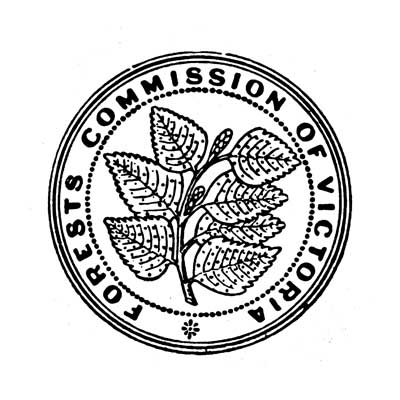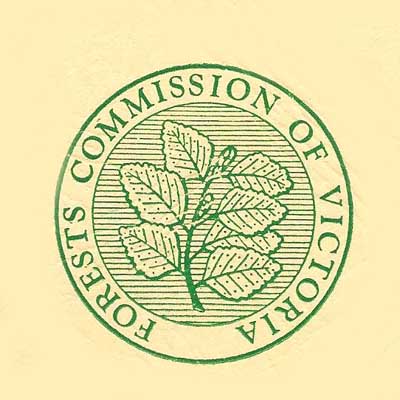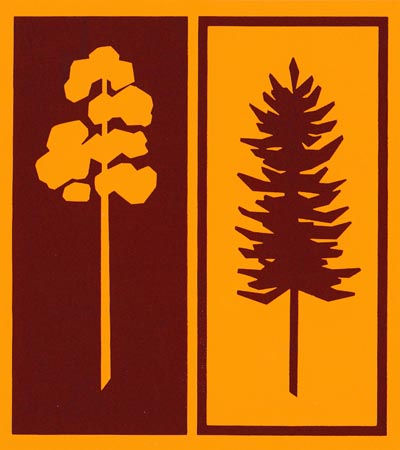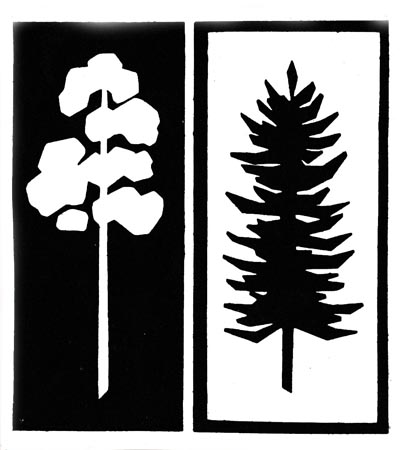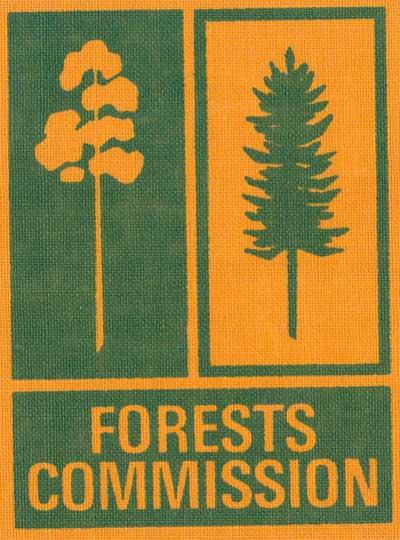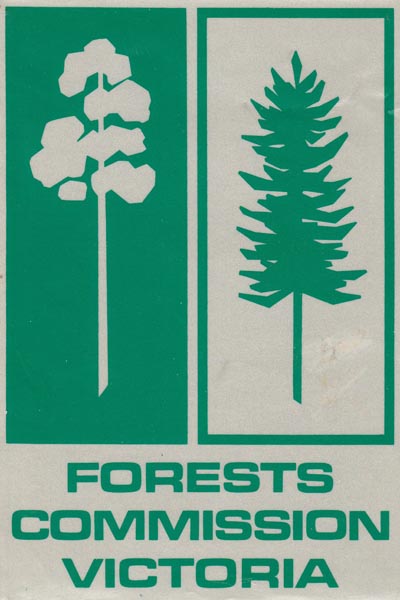- Details
Organising - An Introduction
Forests and Woodlands Need Friends on ‘the Inside’
As life on Earth has evolved, so too has the relationship between forests, woodlands, and humans. The area now known as south-eastern Australia is no different. For millennia humans and the area’s natural landscapes co-existed, first-peoples developing an intimate knowledge of the components, interactions, moods and nuances of the natural world they shared.
The British initiated the movement of people from other lands into the area in the late 1700s and. following the discovery of gold in the mid-1800s, that movement became a flood.
With aboriginal people increasingly marginalised, and the new arrivals believing the continent was too vast and too ‘foreign’ to be concerned about environmentally, the development of a culture that would seek to foster the ‘wise use of natural resources’ took a long time to evolve.
This section of the website seeks to examine that evolution, and the forms it took both in the wider community, and politically and bureaucratically. It begins by examining the early British colonial days, then following the story through to the 1990s. The approaches taken, particularly from the early 1900s, when the first effective government agency dedicated to the care and management of forests was formed in what, by then was the the State of Victoria, are examined in some detail.
The creation (in 1908) of a State Forest Department, and of a related Forests Commission (which began operation in 1919) represented the first serious attempt by government in Victoria to embrace the need to study, care for, and manage what had previously, in community parlance, been known widely as a major element of the ‘wastelands of the Crown’. In the early 1980s forest management was co-located with a range of other scientific disciplines that were important if forest management was to meet community expectations.
Brian Doolan's Work
There is a small but growing body of work becoming available that focuses on the evolution of government involvement in the care and management of forests in Victoria, and arguably the most important work produced to date is by Brian Doolan. In 2015 Brian, whose early career (in the late 1970s) included a role in alpine resort management and recreation with the FCV, and in more recent years senior management positions in Parks Victoria, successfully submitted a thesis (Institutional Continuity and Change in Victoria’s Forests and Parks, 1900-2010) in fulfilment of Master of Arts, Monash University, Clayton. Brian’s research addressed, in significant part and detail, much that is relevant to this section of the website.
Specifically, Brian’s thesis examined, among other things:
- The institutional structures in the form of legislation, government organisations and spatial constructs that had been established to formalise and control forest conservation and use in Victoria between 1900 and 2010;
- How and why Victoria’s forest institutions had been established or modified, and he assesses the tension between institutional continuity and change; and
- In particular, the thesis also investigates the paradox between the long-term objectives that had been established for Victoria’s public forest since the 1980s and repeated short-term changes in the organisations responsible for pursuing those objectives.
Brian then produced a more expansive document based on his thesis entitled "Natural Order. A Descriptive Survey of Victoria’s Forest Institutions, 1900 – 2010".
Brian's work provides the most comprehensive examination of the evolution of forest management in Victoria, and you can also access that work via this article by Mike Leonard.
Except where indicated otherwise, all quotes below come from Brian's work.
MW Carver
The document: MW Carver, ‘Forestry in Victoria: 1838-1919', at around 1300 pages, is considered to constitute an invaluable record of forest matters for the first eighty years of Victoria's development: viz
- Vol. A - Appointments, control of forests, legislation, reservations, nurseries and plantations, miscellaneous
- Vol. B - Cutting restrictions
- Vol. C - Royal Commissions
- Vol. D - Reports
- Vol. E - Notes by M Carver and indexes to vols. A-D
A copy, although not one of great quality, is available on this site.
The Orphan Years - from Settlement to about 1908
Although his focus is the period from 1900-2010, Brian Doolan does provide comment on this period. The quotes from his work, and shown below in this section, encapsulate the failure of forest management to find a home in either an organisational sense or as an important activity of benefit to the commmunity.
"Each of the inquiries recommended a policy of greater forest protection and numerous institutional mechanisms to achieve it. The most commonly recommended mechanisms were: various forms of forest reserves to withdraw certain forested land areas from private alienation and settlement; more effective regulation to control cutting of forests where allowed; and a specialist technical forestry service that would manage the forests and be responsible for the custodial and stewardship role of the State. Comprehensive legislative bills to make these institutional changes were developed by several of the inquiries or by officials in response to the findings. However most of the proposed reforms were politically contested. Research into this period has demonstrated that the major impediment to the policy and institutional reforms that were recommended by the inquiries and officials were parliamentary leaders and factions who knowingly ignored or simplistically refuted the rational evidence repeatedly put forward in inquiry reports and other information."
At least some of the Inquiries referred to by Doolan are available on this site.
For many years forest management lacked any strong focus in the bureaucracy, but attempts were made to provide the focus needed.
"A small State Forests and Nurseries Branch operated in the Department of Agriculture and then was transferred to the Lands Department. The position of ‘Conservator of Forests’ was created in 1888, with George Perrin and a staff of three forming a Forests Branch in the Department of Lands and Survey."
David Williams’ article sets out the struggle, from the 1850s, that took place in the community, and politically, to establish that natural landscapes had merit in their own right and indeed were far more than impediments to economic ‘progress’.
A Strong Forestry Focus at Last, 1907-1984
In his 1887 Report, Vincent recommended the establishment of a Commission.
- That the Governor in Council be empowered to appoint a Commission, consisting of three members, for the purpose of administering the Act.
- That at least one of the Commissioners shall be a competent forest officer, and that the Chairman or Senior Commissioner shall have had proper professional education and training.
- That subject to the provisions of the Act, all Reserved Forests and Reserved Crown Land, proclaimed or notified as such, shall be deemed to be in the possession of the Commissioners and under their control. The grounds on which the appointment of Commissioners is suggested will be found in Chapter IX.
Vincent appears to be the first to advocate a Commission, designed to separate forest management from politics as far as possible, but It took more than 30 years for such a Commission to be established.
- creating a three-person Forests Commission to control and manage virtually all aspects of the State’s forests
- stipulating technical processes and systems for forest management such as ‘working plans’ and silvicultural operations
- establishing a ‘Forestry Fund’ and set a fixed allocation to the fund of £40,000 per year from Consolidated Revenue and the ability to retain half of any annual revenue in excess of £80,000
- authorising the Commission to establish a grading, processing and marketing system for Victorian timbers and to undertake softwood afforestation programs."
The FCV operated throughout its life with a decentralised management structure, with many decisions taken at Divisional/Inspectorate level and at District level. This map from 1928 shows there were five Divisional/Inspectorate areas and 51 Districts. However, from inception the management structures for plantations and forests were separated, but the two streams of management were integrated in a 1957 reorganisation.
Near the end of its life the FCV still operated in a structure similar to that established in 1957, and this pamphlet from 1982 shows how the FCV was organised just before it was abolished.
Meeting New Community Expectations - after the FCV.
In late May 1983 a relatively newly elected Victorian State Government announced its intention to create two new agencies:
- A Department of Conservation, Forests and Lands (CFL) - replacing the Lands Department (which had existed in Victoria since the mid-1800s); the State Forests Department (which had evolved from the Lands Department in the early 1900s, and which had been managed by a government appointed Commission since 1919); and the bulk of the Ministry of Conservation, which had brought together several agencies in the early 1970s (most notably the National Parks Service, the Fisheries and Wildlife Service, and the Soil Conservation Authority; and
- A Ministry for Planning and Environment (MPE) – replacing the then Department of Planning, and the remaining elements of the then Ministry for Conservation, most notably the broad-scale environmental planning and impact assessment groups, and the Environment Protection Authority.
The evolution of CFL, the agency within which forest management responsibility would be located, is described by M Leonard.

